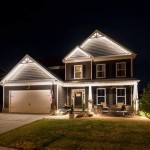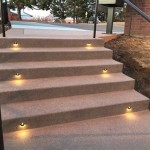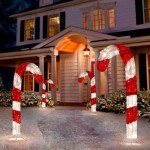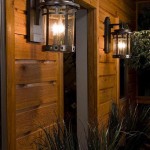Outdoor LED Light Sensor Not Working
Outdoor LED lights equipped with sensors offer convenience and energy efficiency, automatically illuminating spaces when darkness falls. However, these sensors can sometimes malfunction, leaving homeowners in the dark. Troubleshooting a non-functional outdoor LED light sensor requires a systematic approach to identify the root cause. This article explores common reasons for sensor failure and provides practical solutions for restoring proper operation.
1. Power Supply Issues
One of the most fundamental reasons for a malfunctioning sensor is a lack of power. Before delving into more complex diagnostics, verifying the power supply is crucial. Check the circuit breaker associated with the light fixture to ensure it hasn't tripped. If the breaker appears to be functioning correctly, inspect the wiring connections within the fixture itself. Loose or corroded wires can disrupt the flow of electricity to the sensor. Tightening connections or replacing damaged wires may resolve the issue.
2. Photocell Obstruction
The photocell, also known as the light sensor, is the component responsible for detecting ambient light levels. If the photocell is obstructed, it may falsely register daylight and prevent the light from activating. Dirt, debris, leaves, or even overgrown vegetation can interfere with the sensor's ability to accurately gauge light conditions. Carefully clean the photocell with a soft cloth, ensuring it has an unobstructed view of the sky. Additionally, trim back any nearby foliage that may be casting a shadow on the sensor.
3. Sensitivity Adjustment
Many outdoor LED light sensors feature adjustable sensitivity settings. This allows users to customize the light's activation threshold based on their preferences. If the sensitivity is set too high, the light may not activate even in low-light conditions. Conversely, if the sensitivity is set too low, the light may remain on during daylight hours. Consult the manufacturer's instructions for guidance on adjusting the sensitivity setting. Experimentation may be necessary to find the optimal setting for the specific location and surrounding environment.
4. Time Setting Issues (For Timer-Equipped Sensors)
Some outdoor LED light sensors incorporate built-in timers, allowing users to schedule specific on/off times. If the timer is incorrectly configured, the light may not function as expected. Review the manufacturer's instructions to confirm the correct time setting procedure. Ensure the current time and desired on/off times are accurately programmed. In some cases, a reset of the timer may be necessary to restore default settings and resolve any programming errors.
5. Sensor Malfunction
If the power supply, photocell, sensitivity, and timer settings have been checked and the sensor still fails to operate, the sensor itself may be defective. Over time, exposure to the elements can degrade the sensor's internal components, leading to malfunction. In such cases, replacing the entire sensor unit is usually the most efficient solution. Consult a qualified electrician if you are uncomfortable working with electrical wiring.
6. Wiring Problems Within the Fixture
Beyond loose connections, more complex wiring problems within the fixture can also contribute to sensor failure. Damaged wiring insulation, short circuits, or faulty internal components can disrupt the flow of electricity to the sensor. Troubleshooting these issues often requires specialized electrical knowledge. If you suspect a complex wiring problem, it's advisable to contact a qualified electrician to diagnose and repair the fixture.
7. Compatibility Issues with LED Bulbs
While less common, compatibility issues between the sensor and the LED bulb can sometimes arise. Certain sensors are designed to operate with specific types of bulbs. Using an incompatible bulb may result in erratic behavior or complete sensor failure. Verify that the LED bulb being used is compatible with the sensor's specifications. The manufacturer's documentation for both the sensor and the bulb should provide information on compatibility.
Troubleshooting a malfunctioning outdoor LED light sensor requires a methodical approach, starting with the simplest checks and progressing to more complex diagnostics. By systematically addressing potential issues, homeowners can often restore their outdoor lighting to proper working order and enjoy the convenience and energy efficiency these systems provide.

How To Reset A Motion Sensor Light Local Electrical Group

Here S Why Your Motion Sensor Lights Aren T Turning On Us Electric

How To Troubleshoot Motion Detector Lights Solutions For Every Problem

How To Troubleshoot Motion Detector Lights Solutions For Every Problem

Motion Sensor Lights Tips To Reset Detector

Langton Outdoor Led 10 Watt Pir Flood Light Litecraft

The Best Outdoor Motion Sensor Lights In 2024 Popular Science

12w Pir Motion Sensor Led Light Bulb E27 Ip42 Outdoor Lighting Human Induction Wall Lamp Dusk To Dawn Night Porch Bubble Ball China Bulbs Camping

A Short Guide To Fixing And Replacing Faulty Motion Sensor Lights

Design Led Outdoor Lamp With Motion Sensor 20w 1600lm Ip54 Waterproof Black Lf60 20 P B Elro







